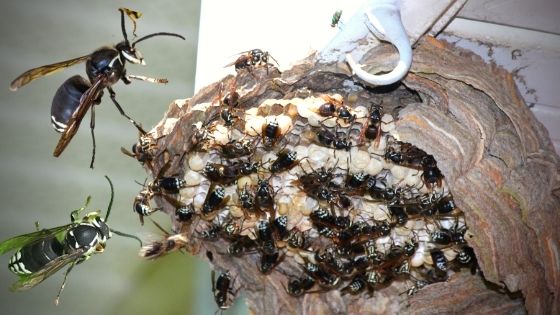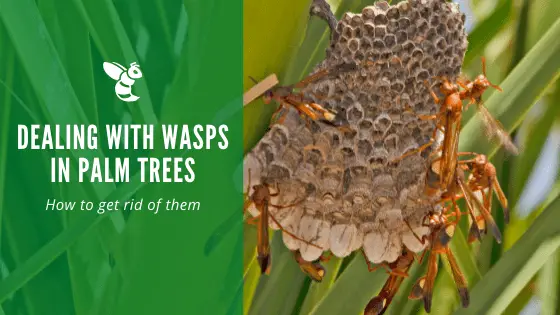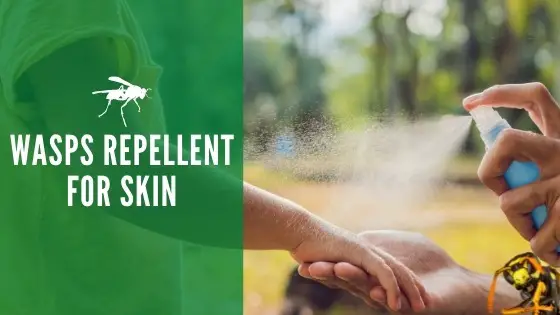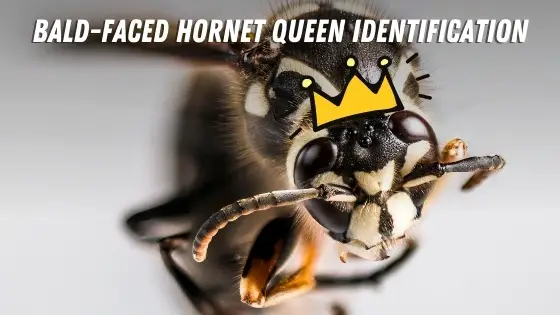Bald Face Hornet Nest Facts: How Far Do They Travel?

A member of the wasp family, the bald-faced hornet, is an insect that can create a very elaborate paper nest structure. There is typically a small hole near the bottom that is their entrance and exit. If the nest expands to a very large size, there may be a couple of holes.
They are quite aggressive and have a painful sting, so it’s a good idea to keep them off your property if you notice them starting to build a nest. Do you know how to spot them and what to do?
How to Locate Bald Faced Hornet Nest
If you notice a large number of bald-faced hornets on your property and you’re concerned that they have built a nest, you should wait until the evening hours to track them. There will be many of them going back to the nest. You can watch their behavior to see where they’ve built their home.
How Long Does it Take for a Bald-Faced Hornet to Build a Nest?
The entire process of creating a bald-faced hornet nest can take about three weeks. Of course, it can be expanded more as time goes on. During fall, all of the wasps will die except for the queen. It will be up to her to survive the winter hibernating, and she will create a new nest once the weather has broken in the spring. Chewing the cellulose from dead trees in the area is the primary method for creating the nest.
What Happens to Bald Faced Hornet Nest in the Winter?
Once the workers have died, and the queen has left the nest, the nest will be abandoned. It can be removed and destroyed, but the elements may very well cause it to blow down and break down.
How Far do Bald-Faced Hornets Travel from Their Nest?
Bald-faced hornets are very protective of their nest, and they will be able to sense if anyone has come within three feet of it. When the spring and summer have begun, they may travel a bit further from their nest, and they work hard to get their colony going. They will try to find as much food as possible to help the larvae grow. It’s typical for a wasp to travel about 50 meters from their nest. They make frequent trips back and forth, so they won’t go too far if they don’t have to.
How Do Bald Faced Hornets Build Their Nests?
The bald-faced hornet nest is started by the queen in the early spring. She will find soft, rotted wood to chew up. Once she creates a chewed cellulose mixture, she will form small paper cylinders that make up the entire nest.
Each compartment will provide adequate housing for an egg, larvae, or adult worker wasp. The workers can expand the nest as needed if their colony becomes very nicely established. The nest looks quite fragile, but it actually becomes very strong the larger it gets. It can withstand rain, wind, and much more.
What Are Bald Faced Hornets Attracted To?
Bald-faced hornets will generally be attracted to areas where they can find a good meal. They’ll look for sites where there are insects that they can eat on a regular basis. They’re looking for their next meal, so they’re not likely to build a nest or travel to an area where there isn’t a food source.
Aphids and caterpillars are their most frequented meal, so you can watch out for infestations of these insects if you’re also trying to keep the bald-faced hornet at bay.
Bald-Faced Hornet Nest Removal Tips
Because of how giant these hornets are and their aggressive nature, you’ll want to take a second to come up with a safe plan for removal. Scout the nest during the day to figure out where the entrance hole is. Night is the best time to spray the nest, so wait until the sun has gone down. This is when most of the hornets will be back inside, and they should be a little calmer during this time.
While you may want to stand far from the nest when you’re spraying, you want to make sure you’re targeting it properly. Recklessly spraying could give the wasps the opportunity to get very angry and attack you. Start by spraying their main entry point. If they start to fly out, they will come into contact with the insecticide.
If you find a large bald-faced hornet nest on your property and you’re concerned with removing it on your own, call a professional to help you take care of the situation. Your safety is important, and you want to make sure the entire nest is removed the first time.
It’s also very likely that you, even being near the nest, is going to cause the bald-faced hornets on your property to become very angry. Unless you have the proper equipment and experience for the job, you should leave this one up to the pros.



